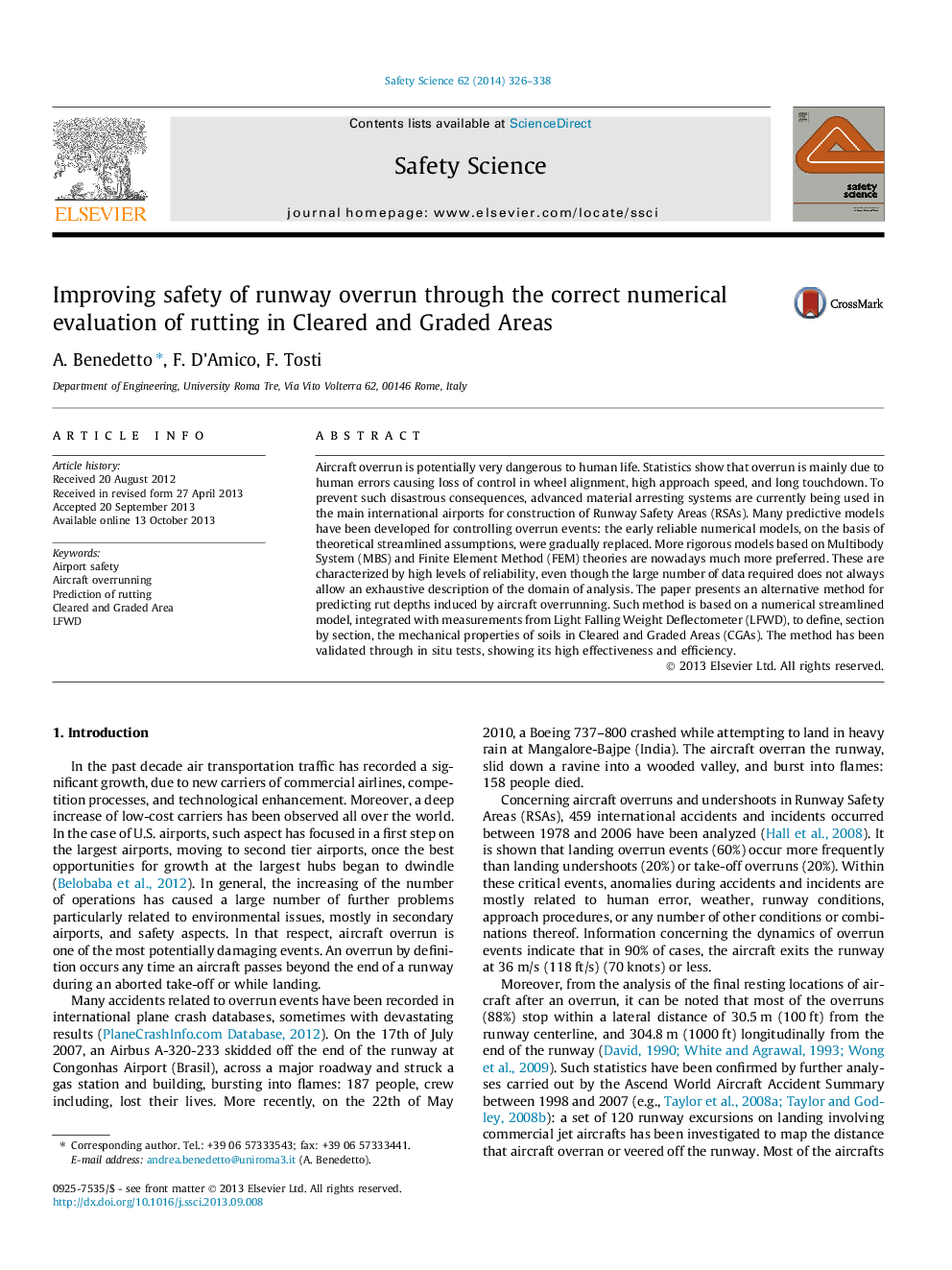| Article ID | Journal | Published Year | Pages | File Type |
|---|---|---|---|---|
| 589237 | Safety Science | 2014 | 13 Pages |
•Improvement of the safety paradigm for landing and taking off of planes.•Development of a novel and more accurate numerical model to predict the distance of plane runoff.•Model validation trough continuous measurements of the mechanical characteristics of the Runway Safety Areas (Strip and RESA).
Aircraft overrun is potentially very dangerous to human life. Statistics show that overrun is mainly due to human errors causing loss of control in wheel alignment, high approach speed, and long touchdown. To prevent such disastrous consequences, advanced material arresting systems are currently being used in the main international airports for construction of Runway Safety Areas (RSAs). Many predictive models have been developed for controlling overrun events: the early reliable numerical models, on the basis of theoretical streamlined assumptions, were gradually replaced. More rigorous models based on Multibody System (MBS) and Finite Element Method (FEM) theories are nowadays much more preferred. These are characterized by high levels of reliability, even though the large number of data required does not always allow an exhaustive description of the domain of analysis. The paper presents an alternative method for predicting rut depths induced by aircraft overrunning. Such method is based on a numerical streamlined model, integrated with measurements from Light Falling Weight Deflectometer (LFWD), to define, section by section, the mechanical properties of soils in Cleared and Graded Areas (CGAs). The method has been validated through in situ tests, showing its high effectiveness and efficiency.
